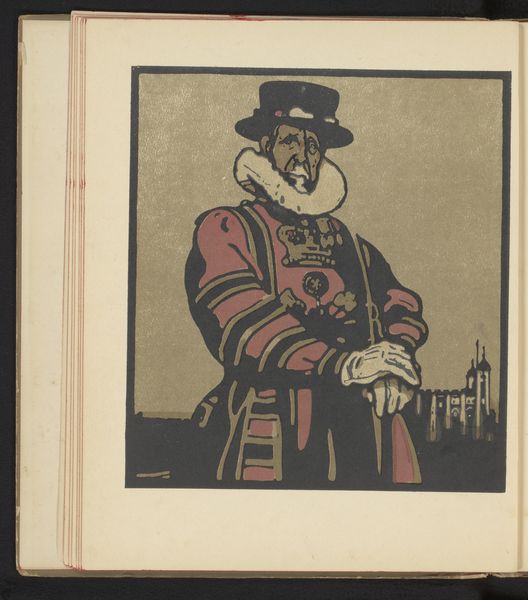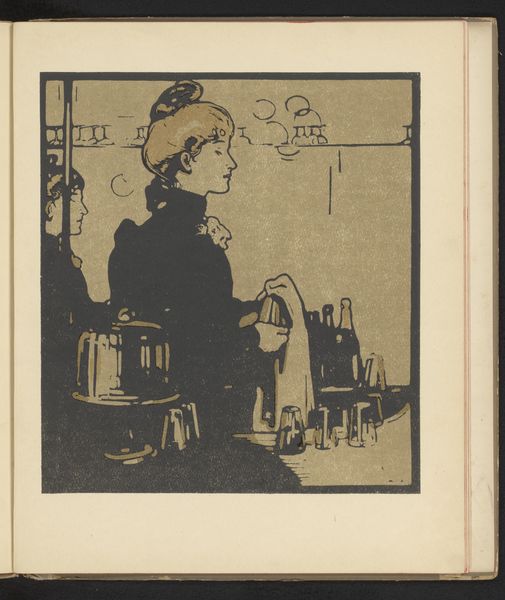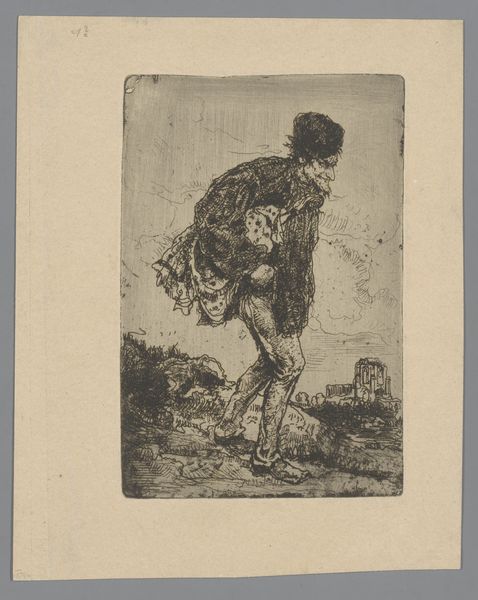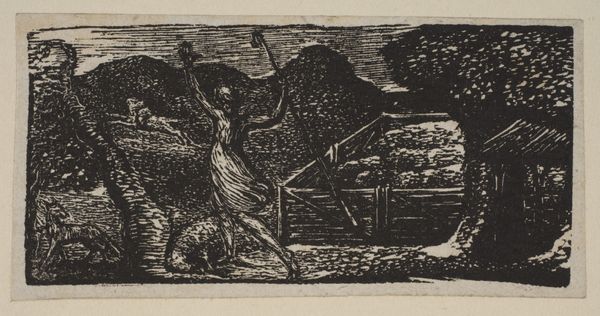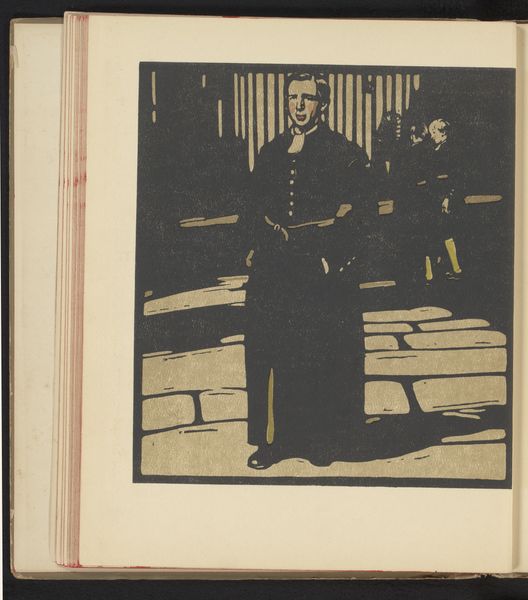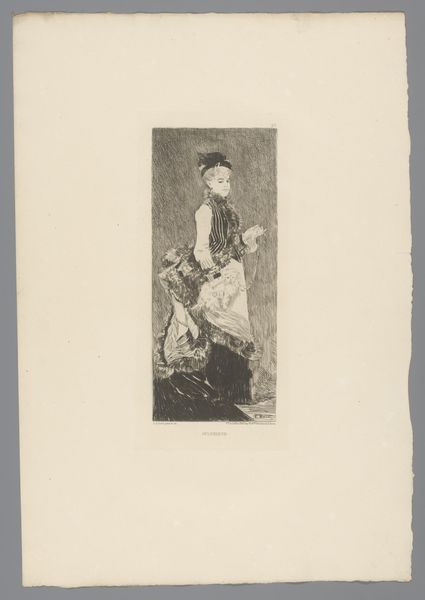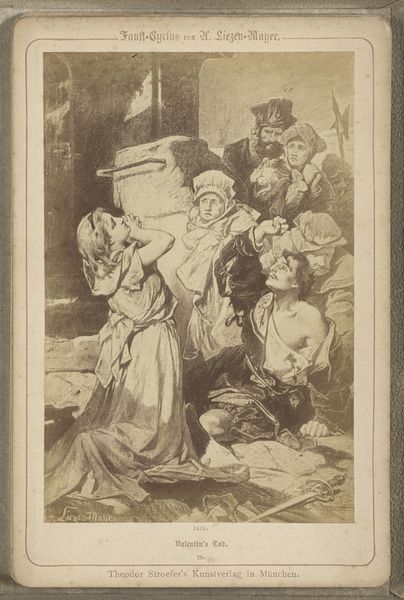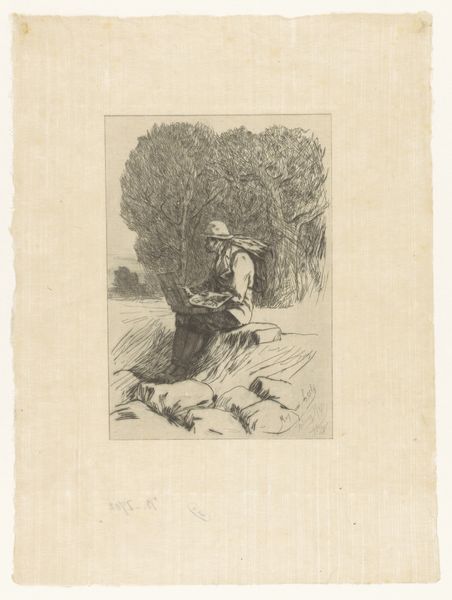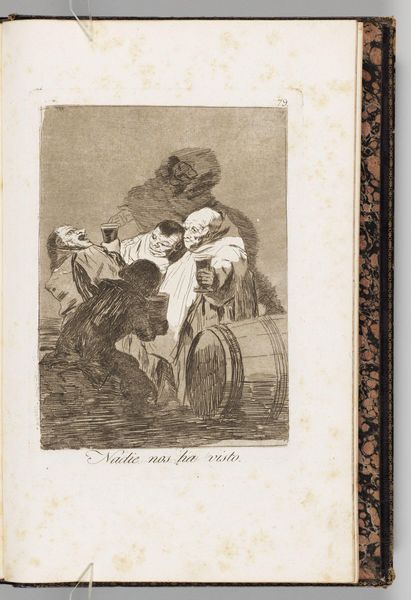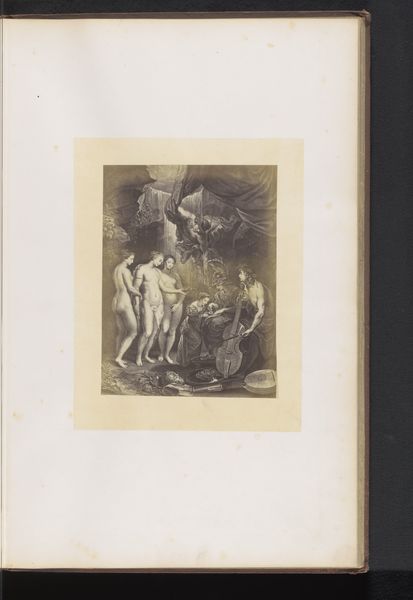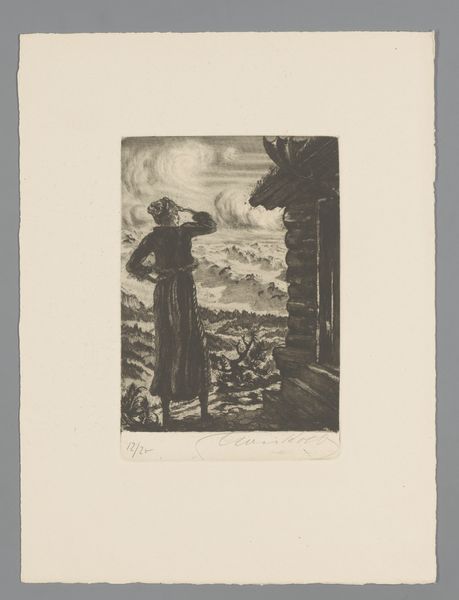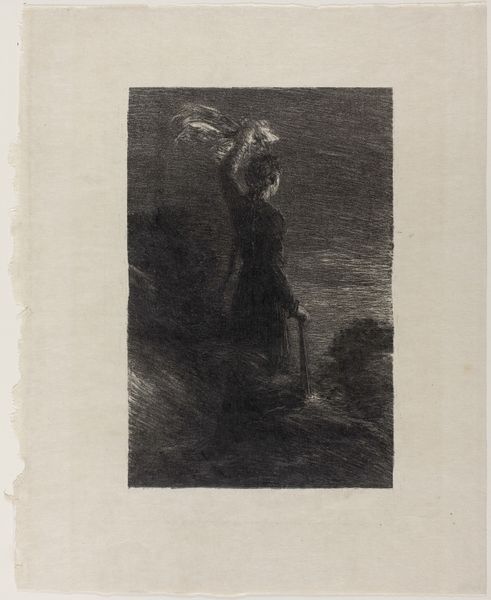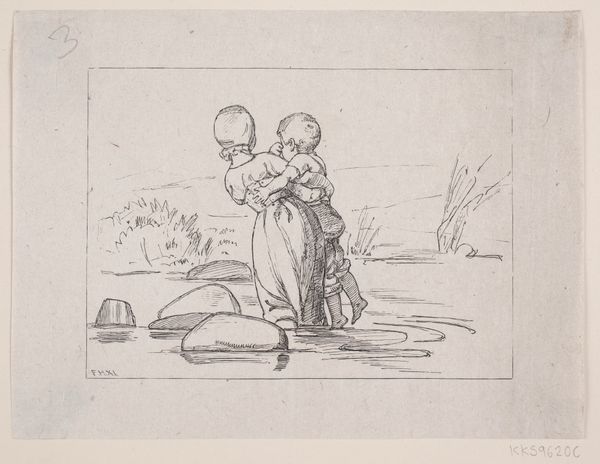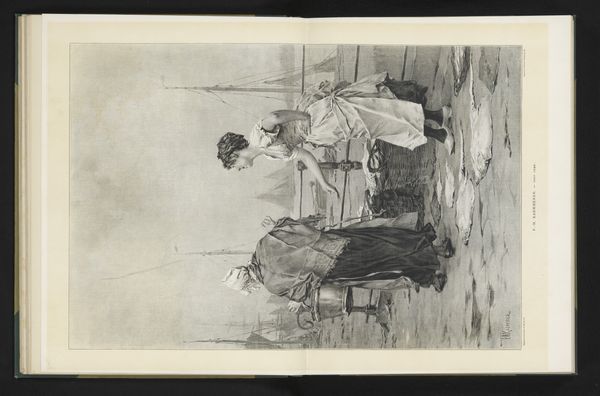
Dimensions: height 333 mm, width 266 mm
Copyright: Rijks Museum: Open Domain
Editor: Here we have "Vrouw met hoed op straat", or "Woman with Hat in the Street," a woodcut print from 1898 by William Nicholson. I'm immediately struck by the flatness of the scene and how that makes her figure feel both prominent and isolated. What do you make of the composition? Curator: The simplification of form speaks volumes about Nicholson's critical commentary on societal structures, doesn't it? We see a woman in what appears to be a middle-class dress and an oversized hat that conveys wealth, juxtaposed against what looks like child labor or some other form of struggle in the background. Notice the flat planes of color. Does it remind you of print media, used for propagating news, opinions and social commentary? How does this piece speak to Victorian-era societal disparities of wealth and labor? Editor: I didn't even notice the person on the donkey! So you see that contrast as deliberate, a commentary on wealth inequality? I guess her isolation makes more sense now. Curator: Precisely. And consider the scale. It's a print, meant for distribution, for mass consumption. Could it be arguing that the obliviousness to societal imbalance can be remedied if people only saw it? Nicholson makes the social contrast palpable in a single image. What do you feel Nicholson wants the viewer to *do* with this newfound perspective? Editor: That's a great question. I suppose he’s trying to inspire empathy, maybe even action. To make the invisible, visible. Thanks; now the visual language really resonates! Curator: Absolutely! Seeing art through the lens of social critique unveils powerful dialogues within and around it, doesn’t it? I am curious about what these kinds of considerations do for you.
Comments
No comments
Be the first to comment and join the conversation on the ultimate creative platform.
